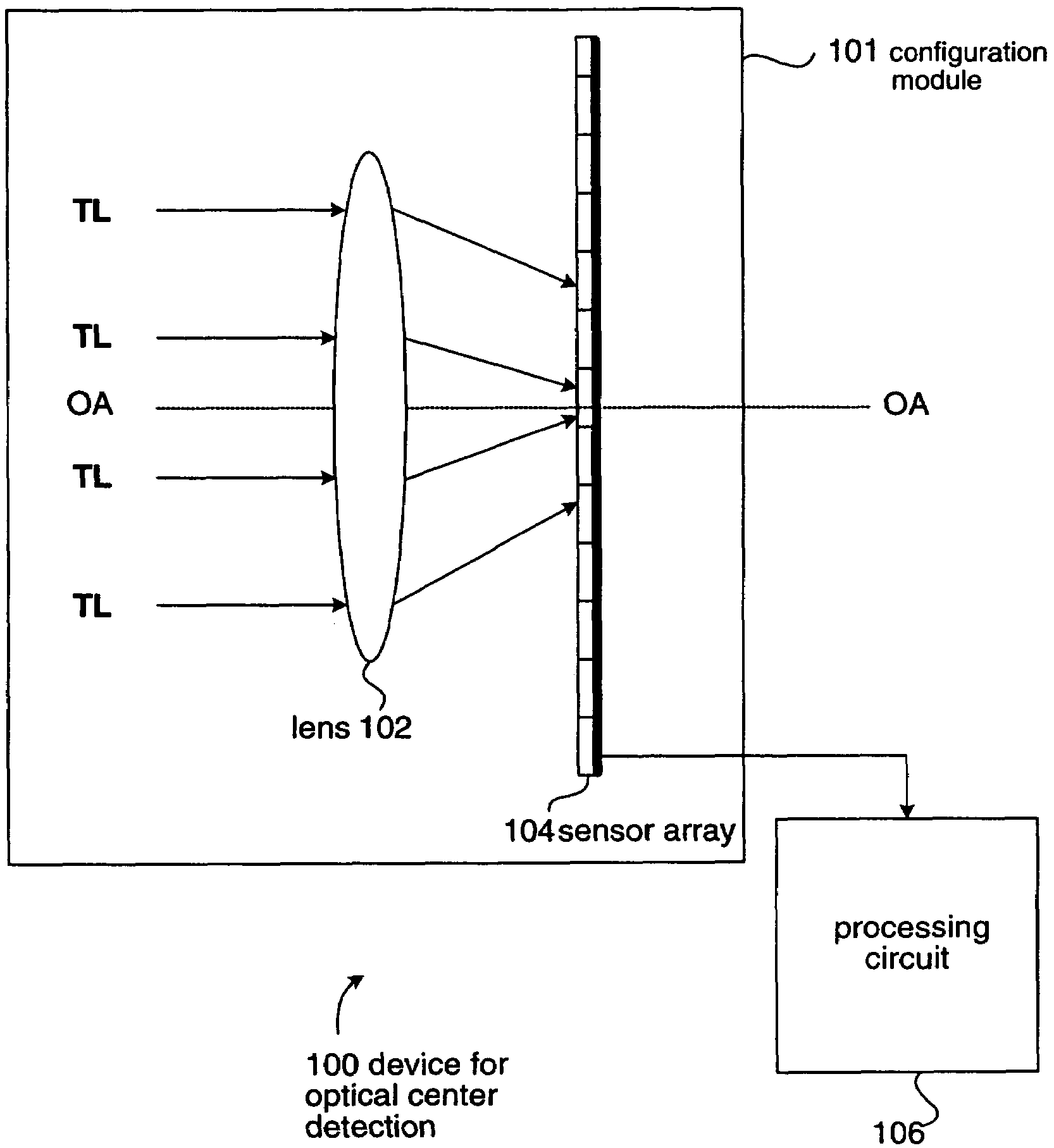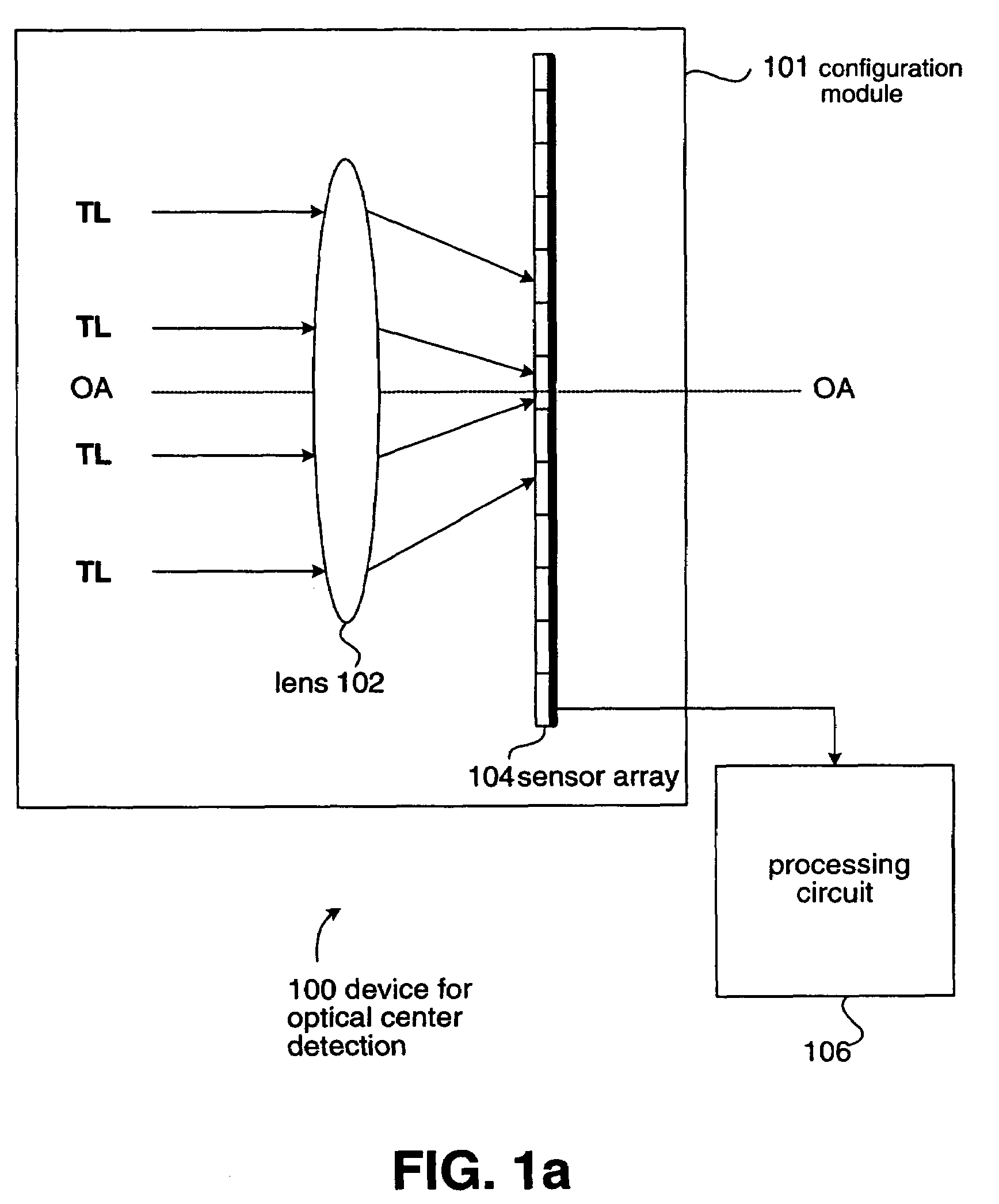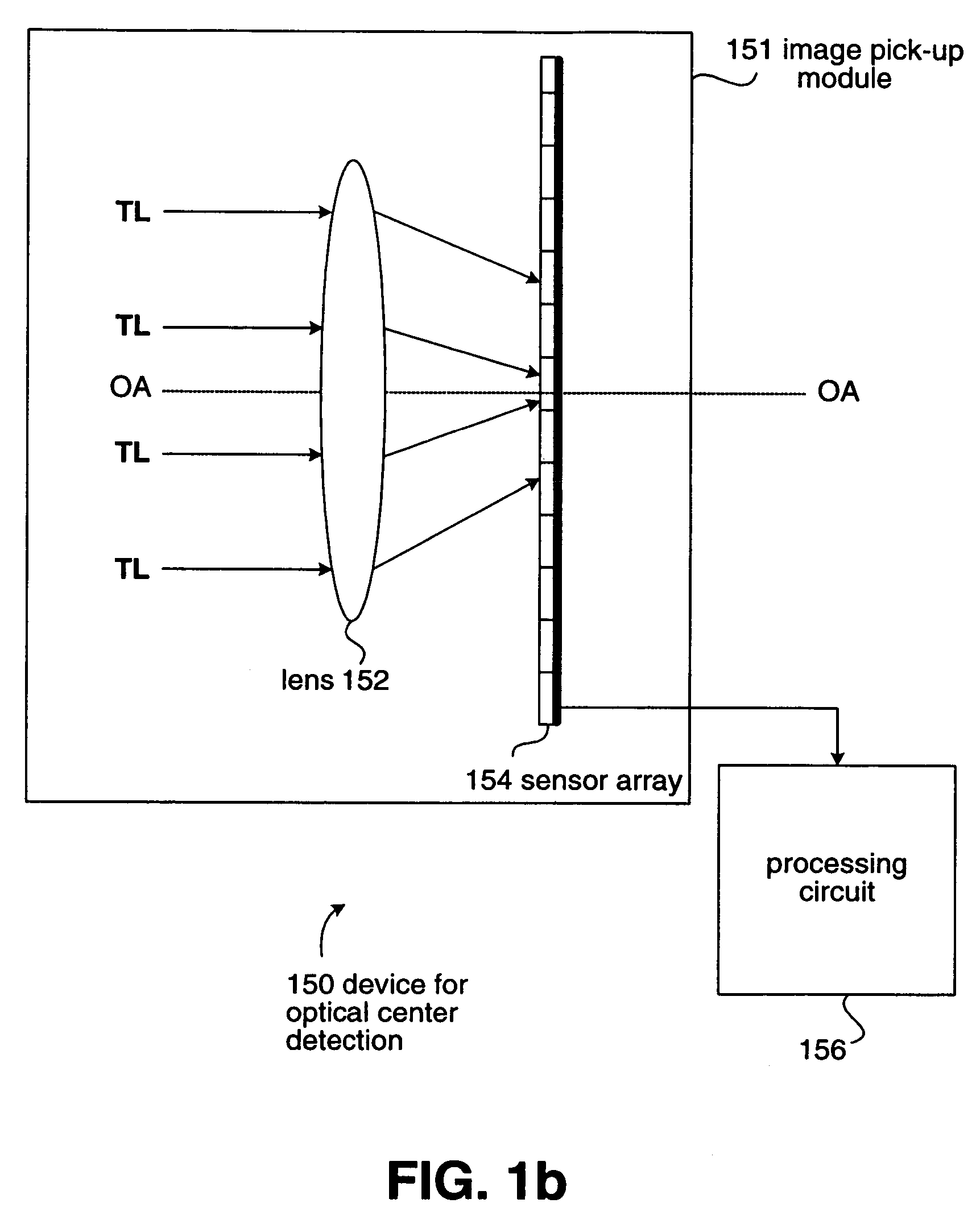Device and method for optical center detection
a technology of optical center detection and optical center, which is applied in the direction of optical radiation measurement, instruments, television systems, etc., can solve the problems of not revealing the suitably adjusted position of the sensor array along the direction, the design using the position pin becomes too complicated, and the quality of the outputted digital image is affected, so as to achieve easy determination and simple and more accurate
- Summary
- Abstract
- Description
- Claims
- Application Information
AI Technical Summary
Benefits of technology
Problems solved by technology
Method used
Image
Examples
Embodiment Construction
[0022]Referring to FIG. 1a, a device 100 is provided for computing an optical center of a sensor array 104 relative to a lens 102. The device 100 includes a configuration module 101 and a processing circuit 106. Note that the combination of the lens 102 and the sensor array 104 can form an image pick-up module for the device 100 to generate a digital image corresponding to a target.
[0023]In an embodiment, the configuration module 101 has a base (not shown) for positioning the lens 102 and the sensor array 104 thereon, and provides the electrical connection with the sensor array 104. Alternatively, according to the result of computation mentioned hereinafter, the base of the configuration module 101 can be adjusted for the alignment of lens 102 relative to the sensor array 104. After the alignment was done, the relative position of the lens 102 to the sensor array 104 can be fixed using the conventional packaging technology. The packaged lens 102 and the sensor array 104 together can...
PUM
| Property | Measurement | Unit |
|---|---|---|
| optical center | aaaaa | aaaaa |
| distance | aaaaa | aaaaa |
| optical | aaaaa | aaaaa |
Abstract
Description
Claims
Application Information
 Login to View More
Login to View More - R&D
- Intellectual Property
- Life Sciences
- Materials
- Tech Scout
- Unparalleled Data Quality
- Higher Quality Content
- 60% Fewer Hallucinations
Browse by: Latest US Patents, China's latest patents, Technical Efficacy Thesaurus, Application Domain, Technology Topic, Popular Technical Reports.
© 2025 PatSnap. All rights reserved.Legal|Privacy policy|Modern Slavery Act Transparency Statement|Sitemap|About US| Contact US: help@patsnap.com



